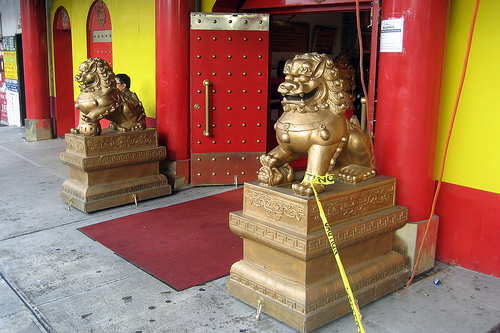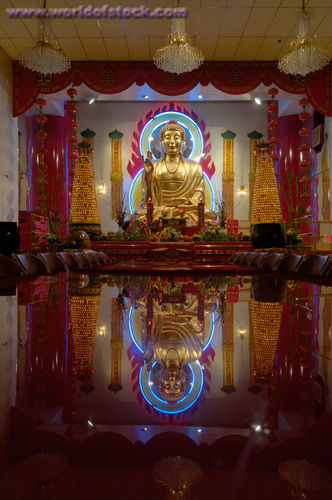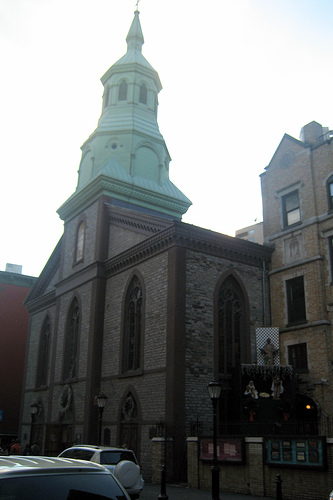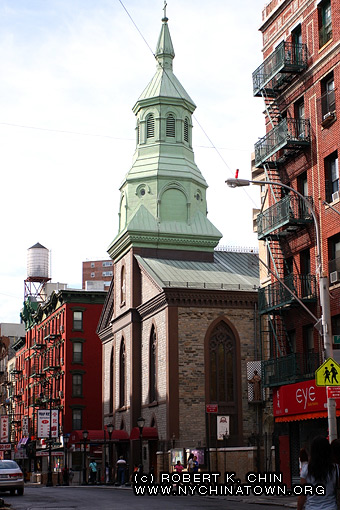From The Peopling of New York City
Contents |
Churches
Mahayana Buddhist Temple
Located just across the Manhattan Bridge at 133 Canal Street, this famous temple is home to probably, largest Buddha in New York City. Illuminated from behind by a neon blue halo, this sixteen-foot golden statue rest on a giant lotus. Mahayana is one of two main sects of Buddhism; this particular sect places a lot of emphasis on the teachings of the Great Buddha. Main goals of the Mahayana include the enlightenment of all conscious beings, love kindness and compassion. Mandarin is the main language used in this temple.
The exterior temple was inspired by Chinese architectural designs; the building was constructed to honor Mrs. Annie Ying’s 83rd birthday. Guarding the temple from malicious spirits are two enormous lions. Buddha’s life is illustrated throughout the temple in numerous depictions. At the entrance, there is a large golden incense holder, which burns in front of an image of Guan Yin. Visitors are encouraged to sit at benches nearby. If you want to visit, Public services are held on weekends and are usually carried out with formalities like bells and drums. For a dollar, fortunes can be read just outside the building. Interestingly enough, before 1996, the temple was, the Rosemary Theatre, which played Adult movies.
Catholic Transfiguration Church
The oldest house of worship for Catholics, it was built in 1801 by descendants of German Lutheran émigrés, and cost approximately 15,000 dollars to construct. The church then became property of the Protestant Episcopal Church. The building was later purchased by the Roman Catholic Diocese of New York in 1853. Mother Frances Cabrini, named the building "Saint of All Immigrants" in the 1950s by Pope Pius XII and established a school at the Transfiguration Parish in 1899. The church began serving poor Irish Immigrants and eventually extended services to the Italian and Chinese immigrants. Hence the church became an institution of languages and aid for immigrants. It was also a connection between the government and the people of the church. When the Golden Venture ran aground in Queens in 1993, nearly 300 desperate Chinese immigrants arrived and the Police Department asked the church if it had any Fujianese speakers.
It is a substantial stone church built with Gregorian style and has stained glass accents. The windows have a Gothic-parish influence reminiscent of the 1850s England. Programs range from a parochial curriculum to kindergarten school and bible study. This church has the largest Chinese American congregation and is considered the largest Catholic Chinese church in the Country. This church draws a lot of immigrants with its language courses and its differing language masses. The Italian Americans have a specific spot, as well as the different Chinese people with different dialects. English as a second language is offered through a course.
References
http://nymag.com/listings/attraction/mahayana-buddhist-temple/ http://www.flickr.com/photos/wallyg/331381453/ http://newyork.citysearch.com/profile/11640918/new_york_ny/church_of_the_transfiguration.html http://cafetheology.org/2007/05/21/catholic-church-in-new-yorks-chinatown-a-beacon-for-immigrants/ http://www.nytimes.com/2007/12/25/nyregion/25mass.html



